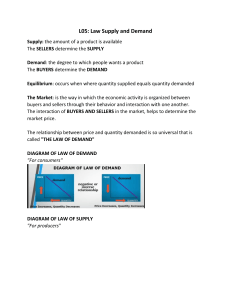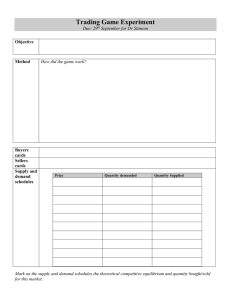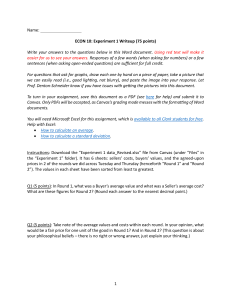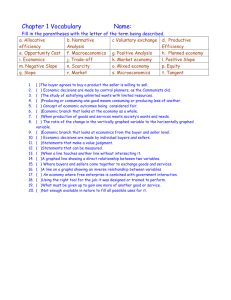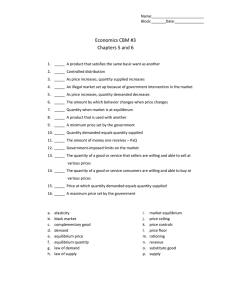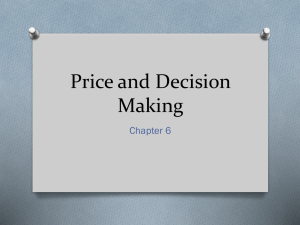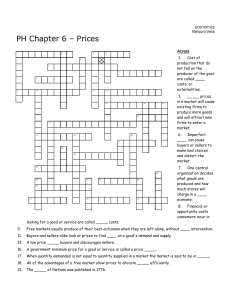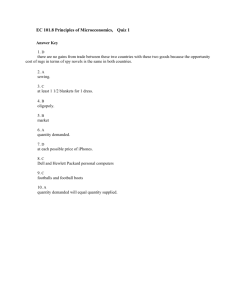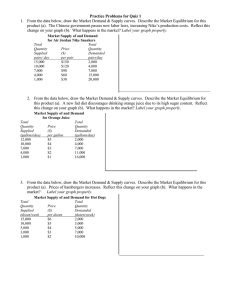Demand, supply, & markets
advertisement
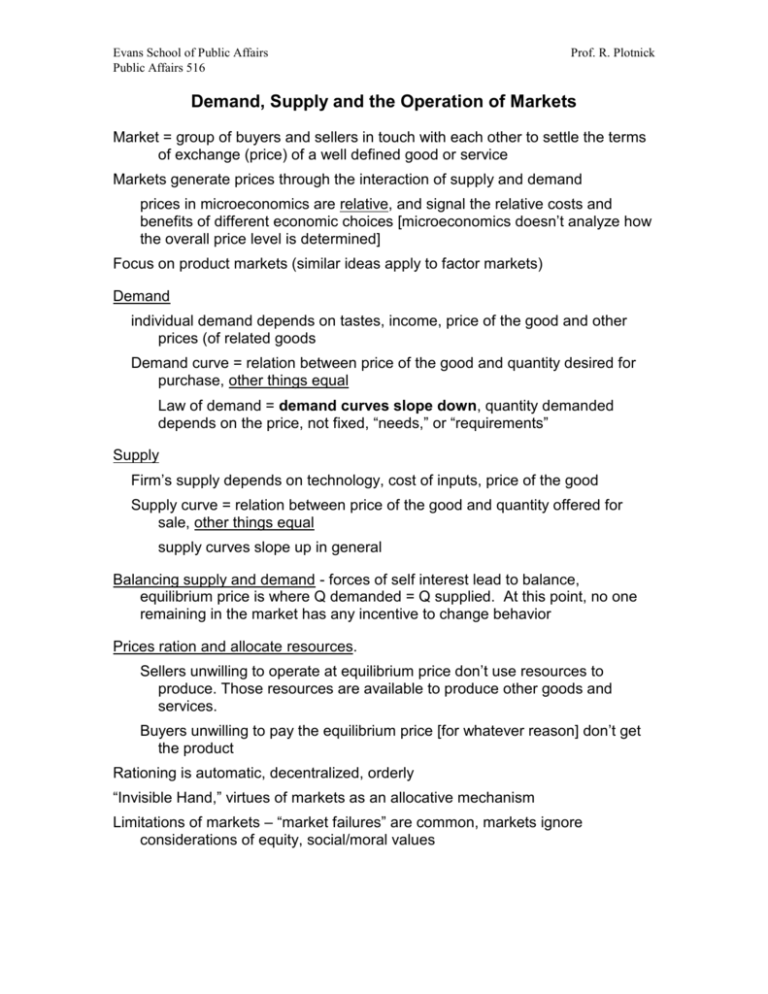
Evans School of Public Affairs Public Affairs 516 Prof. R. Plotnick Demand, Supply and the Operation of Markets Market = group of buyers and sellers in touch with each other to settle the terms of exchange (price) of a well defined good or service Markets generate prices through the interaction of supply and demand prices in microeconomics are relative, and signal the relative costs and benefits of different economic choices [microeconomics doesn’t analyze how the overall price level is determined] Focus on product markets (similar ideas apply to factor markets) Demand individual demand depends on tastes, income, price of the good and other prices (of related goods Demand curve = relation between price of the good and quantity desired for purchase, other things equal Law of demand = demand curves slope down, quantity demanded depends on the price, not fixed, “needs,” or “requirements” Supply Firm’s supply depends on technology, cost of inputs, price of the good Supply curve = relation between price of the good and quantity offered for sale, other things equal supply curves slope up in general Balancing supply and demand - forces of self interest lead to balance, equilibrium price is where Q demanded = Q supplied. At this point, no one remaining in the market has any incentive to change behavior Prices ration and allocate resources. Sellers unwilling to operate at equilibrium price don’t use resources to produce. Those resources are available to produce other goods and services. Buyers unwilling to pay the equilibrium price [for whatever reason] don’t get the product Rationing is automatic, decentralized, orderly “Invisible Hand,” virtues of markets as an allocative mechanism Limitations of markets – “market failures” are common, markets ignore considerations of equity, social/moral values
